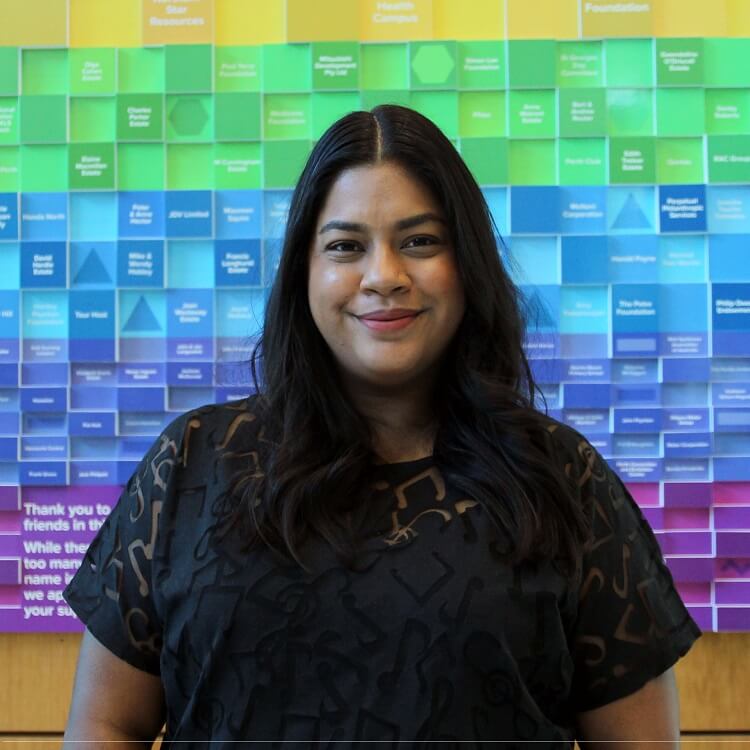Search
Showing results for "early lung health"
Research
Short-term outcomes in infants following general anesthesia with low-dose sevoflurane/dexmedetomidine/remifentanil versus standard dose sevoflurane (The TREX trial)The Trial Remifentanil DEXmedetomidine trial aimed to determine if, in children < 2 years old, low-dose sevoflurane/dexmedetomidine/remifentanil anesthesia is superior to standard dose sevoflurane anesthesia in terms of global cognitive function at 3 years of age.
Research
Patient and Process Outcomes among Pediatric Patients Undergoing Appendectomy during the COVID-19 Pandemic: An International Retrospective Cohort StudyCOVID-19 forced healthcare systems to make unprecedented changes in clinical care processes. The authors hypothesized that the COVID-19 pandemic adversely impacted timely access to care, perioperative processes, and clinical outcomes for pediatric patients undergoing primary appendectomy.
Research
Kids voices: Exploring children's perspective of tonsillectomy surgeryBritta Regli-von Ungern-Sternberg AM FAHMS MD, PhD, DEAA, FANZA Chair of Paediatric anaesthesia, University of Western Australia; Consultant
Research
More than half of front-line healthcare workers unknowingly used an N95/P2 mask without adequate airborne protection: An audit in a tertiary institutionFront-line staff routinely exposed to aerosol-generating procedures are at a particularly high risk of transmission of severe acute respiratory syndrome coronavirus. We aimed to assess the adequacy of respiratory protection provided by available N95/P2 masks to staff routinely exposed to aerosol-generating procedures.
Research
An assessment of opioids on respiratory depression in children with and without obstructive sleep apneaObstructive sleep apnea is a risk factor for respiratory depression following opioid administration as well as opioid-induced hyperalgesia. Little is known on how obstructive sleep apnea status is associated with central ventilatory depression in pediatric surgical patients given a single dose of fentanyl.
Research
Maternal Serum Vitamin D Levels During Pregnancy and Offspring Neurocognitive DevelopmentNew research links poor language to lack of Vitamin D in womb.

News & Events
Multi-million-dollar investment in child health to support vital researchFour The Kids Research Institute Australia researchers have received prestigious fellowships and four significant cohort studies led or co-led by The Kids have received key grants under two new funding programs supported by the State Government’s Future Health Research and Innovation (FHRI) Fund.

News & Events
People power takes tiny study to the next levelOne of the biggest problems facing young people with neuromuscular disorders is the risk of breathing problems caused by muscle weakness during sleep.
Research
Immunogenicity, reactogenicity, and IgE-mediated immune responses of a mixed whole-cell and acellular pertussis vaccine schedule in Australian infants: A randomised, double-blind, noninferiority trialIn many countries, infant vaccination with acellular pertussis (aP) vaccines has replaced use of more reactogenic whole-cell pertussis (wP) vaccines. Based on immunological and epidemiological evidence, we hypothesised that substituting the first aP dose in the routine vaccination schedule with wP vaccine might protect against IgE-mediated food allergy. We aimed to compare reactogenicity, immunogenicity, and IgE-mediated responses of a mixed wP/aP primary schedule versus the standard aP-only schedule.

News & Events
The Kids researchers awarded Raine Medical Research Foundation fundingCongratulations to Dr Gail Alvares and Dr Rachel Foong, who have been awarded funding from the Raine Medical Research Foundation.
